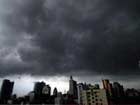| Videos | ? Latest |
|
? Feature | ? Sports | ? Your Videos |
China faces unusual climate

Since the end of last year, severe weather has been hitting China around the country and disturbing people's daily life. On Wednesday, a spokesman from the China Meteorological Administration sums up the phenomenon and their effects on people's lives.
In the middle of April, when normally there are spring blossoms everywhere, snowstorms blanketed areas of Inner Mongolia. The spring snows add to the region's worst winter in 60 years. In its neighboring provinces, Heilongjiang and Jilin, rare blizzards also struck.
On Wednesday, at a press conference held by the China Meteorological Administration, it is announced that the average temperature of the entire nation is 8.7 degree Celsius, 1.3 lower than usual. And it's the lowest since 1961.
April has been the month with the most rainfall since 1974. The drought in China's southwestern regions has been greatly eased. But as strong rains hit the middle and lower reaches of the Yangtze River and some parts of Guangxi Zhuang Autonomous Region, warnings against flooding have been announced.
At the same time, strong winds and sandstorms scour most of China's northern regions. The Xinjiang Uygur Autonomous Region, Inner Mongolia, Jilin, Gansu, central Hebei and Shaanxi provinces have all received blankets of dust. The sand not only hampers transportation, and agriculture production, but also does great harm to people's health.
 0
0 






